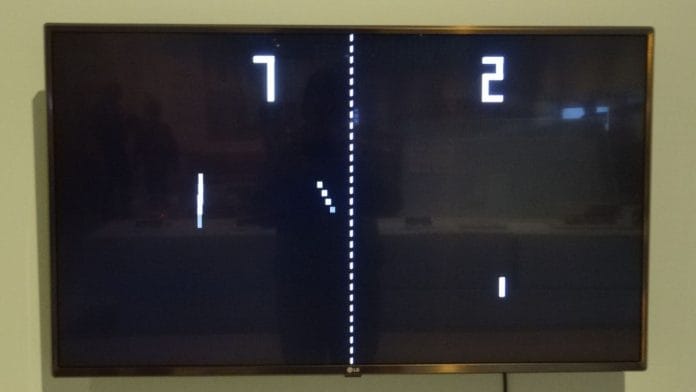Bengaluru: Biomedical engineers from the United Kingdom have created a polymer hydrogel—a jelly-like substance—which can be infused with electrical currents in order to make it function as memory and an “artificial brain”. With feedback from this artificial brain’s emergent memory that arises from the currents, the gel is able to accurately play Pong, a table tennis-themed video game wherein a brick hits a ball that bounces around.
The study, demonstrating how the jelly functions as an artificial brain, was published last week in the journal Cell.
Led by Vincent Strong of the University of Reading, the study said the blob is not biological and is stimulated by ions in its polymer chain structure which move when electrical current is applied. This causes the gel to swell up, and then slowly shrink. The deswelling process influences the subsequent motions, and continually rearranges ions inside the gel’s material, making the currents function as “artificial memory”.
For the gel to make motor movements based on previous movements or memory, the researchers connected the gel to a single-paddle ‘Pong’ simulation, and electrically stimulated the gel so that it could position the ball. The gel’s ions flowed to position the pong and paddle, leading to rallies.
The gel peaked in its ability in 20 minutes.
The study is a demonstration of how neural networks can potentially become artificial intelligence that is capable of complex processing.
Also Read: Mars may have oceans’ worth of water underground, but this doesn’t mean it’s ready to be colonised
What smart materials can do
As technology improves rapidly around the world, material science is making advances. Intelligent, responsive or “smart” materials are those that are designed to respond to external stimuli like electricity, moisture, temperature and light, among others. These materials are often used to make sensors, and are applied widely in biotechnology, medical and biomedical sciences, especially within the human body.
Hydrogels are a mix of solids and are often jelly-like polymers. They are mainly synthetic but can also be natural. Because electro-active polymer (EAP) hydrogels are responsive to electricity, they are often used in biological neural network research.
The authors wanted to go beyond a previous 2022 research, as part of which a team demonstrated that a blob of human brain cells in a Petri dish could be taught to play Pong. Known as DishBrain, it was used as a metric for artificial memory material study.
Previously, the authors of the new study had been able to demonstrate how EAP hydrogel could beat in sync with a human pacemaker, expanding and contracting, resembling an artificial heart. During the process, they noticed that the material retained its previous shape, and a “memory” of beating, even after the pacemaker was stopped.
How the artificial brain played ‘Pong’
Pong consists of one paddle and a ball that is bounced towards bricks against a wall using the paddle. Thus, electrical processes require two signals: one for the ball to make it move and another for the paddle.
The engineers developed a special interface and built an electrical adaptation of the game. They stimulated the gel with electrical pulses that indicated random positions the ball moved to.
The structure of the “smart material” gel then responded to the electrical stimuli by rearranging ions. As the ions moved around, they also dragged with them water molecules, which caused changes in water distribution in the gel, leading to localised deformation and structural change, causing the gel to physically move.
By recording ion concentrations before and after a response event, the amount of “memory” the material has can be understood.
With two pairs of electrodes, stimulation was applied to the gel while the conductivity of ions inside was simultaneously studied.
As the gel responded to the electrical signal, it “played” rallies with its virtual paddle.
Since the material deformed every time it performed the paddle function, the retained shape functioned as a memory of sorts, improving performance.
The authors stated that this form of memory is an “emergent” ability, something the material was not explicitly designed for.
But the findings open up newer and interesting avenues of materials research for wider applications.
(Edited by Radifah Kabir)






